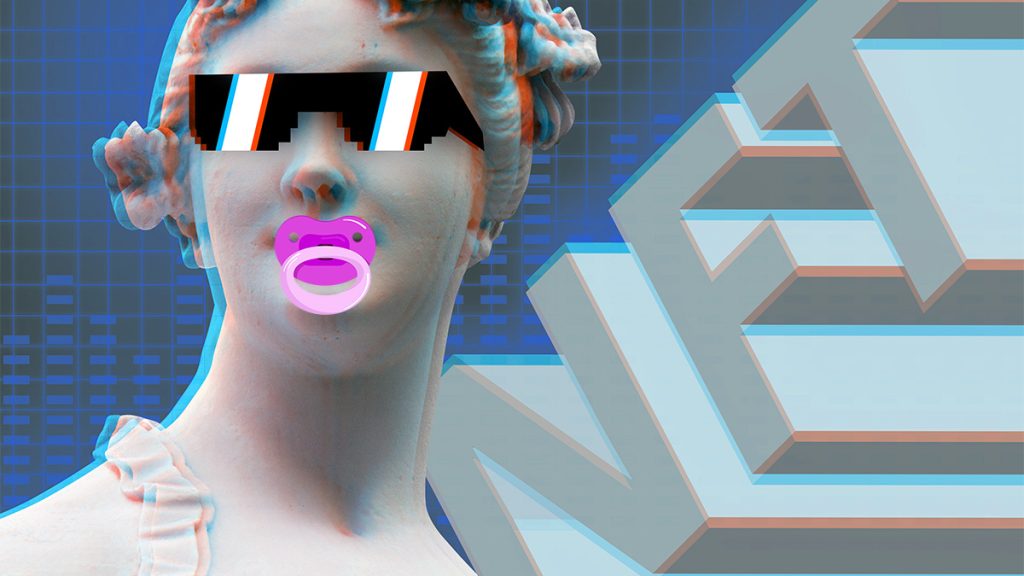
So you finally gave into the intrigue and want to know what all the fuss is about around NFTs? You’ve come to the right place. Read on for a brief yet comprehensive guide about NFTs for dummies.
A non-fungible token (NFT) is a special digital code that identifies a certain sort of digital object and is not replaceable or fungible. For instance, it may be digital music or painting. On a public blockchain, an NFT is protected and kept. A token cannot be exchanged for another token and cannot be split in any way.
Non-fungible tokens can be produced in a wide variety of ways on well-known blockchains like Bitcoin and Ethereum.
NFT for Dummies: What is an NFT
NFT stands for “non-fungible token,” or currency.
NFTs are digital assets that may be bought, sold, and exchanged at will, just like any other asset you hold. They are similar to cryptocurrencies like Bitcoin.
NFTs are tokenized, as one may infer from the name “token.” This implies that every single one of them is distinct from all others, including previous iterations of the asset that the NFT is built on.
When anything is tokenized, a digital ownership certificate that verifies this is linked to it.
To fully comprehend NFT for dummies, you must also comprehend what is meant by the word “fungible.”
Something that is easily exchangeable for items with similar or comparable value is said to be fungible. (Because each Bitcoin is worth exactly the same as every other, it serves as a superb illustration of a fungible digital asset.)
On the other hand, a non-fungible item is unique and has no substitute.
Many of the most expensive items in the world, including rare gems and unique works of art like the Mona Lisa, are so expensive because they are non-fungible—irreplaceable with no real counterpart.
NFT for Dummies: Non-Fungible Tokens and Blockchain
Blockchain technology should be at least somewhat known to anyone who has even a passing familiarity with Bitcoin, Ethereum, and other cryptocurrencies.
A blockchain is a database that is used to store different types of digital data in time order. These parts are referred to as blocks.
Blockchains are also decentralized, which means that several authorities, offices, or entities, as opposed to just one, have power over them.
Because blockchains are decentralized, buyers and sellers may communicate directly with one another rather than going via a middleman or other authority.
Naturally, when someone chooses to acquire an NFT, they won’t be receiving a tangible item to possess as they would if they choose to buy an actual Van Gogh artwork.
Instead, a blockchain ledger comprised of millions of computers worldwide contains a record of their purchase of the original digital item. That document serves as evidence of the NFT’s ownership and value.
Most Popular Use Cases for NFTs
- One-of-One Artwork
- Generative NFT Art
- Sports Collectibles
- Photography NFTs
- Music NFTs
- PFP and Avatar NFTs
- Gamified NFTs
- NFT Event Tickets
- Membership Passes
- Meme NFTs
- Domain Names
- Miscellaneous Digital Items
If you would like to learn more about each of these NFT use cases check out the article: Most Popular NFTs to Buy in Every Niche.
Characteristics of NFTs
So now you know a little about what an NFT actually is. Let’s examine the three characteristics of NFTs that give them value.
Uniqueness
By offering metadata that identifies the asset as unique and one of a kind, and distinguishes it from other assets, NFTs enable you to define an asset in a unique way.
For instance, a project like Decentraland offers for sale digital plots of land. The metadata for each piece of land includes virtual coordinates as well as information on the land’s characteristics, such as the amount of grass cover or the presence of structures.
Rarity
One factor that contributes to the popularity of NFTs is rarity, also known as scarcity. What if you requested a supply of one million tokens? Yes, that is feasible. More tokens are you seeking? Simply raise the overall supply in your smart contract.
It is not possible to endlessly produce new assets with NFTs. Because each item can only be defined once on the blockchain due to rarity, NFTs are highly prized by collectors.
Assets are uncommon since only one person may register them at a time. In other words, NFTs have value as long as people are willing to pay for them because of their rarity. In an NFT game, you may actually own a piece of land and trade it exactly like a real piece of land.
Indivisibility
Finally, NFTs cannot be separated. You might, for instance, possess a whole bitcoin. However, you may divide a bitcoin into smaller denominations and purchase 1/10 of a bitcoin if you don’t have enough cash to acquire a whole bitcoin. This means that a Bitcoin is fungible.
A non-fungible token on the other hand is a unique and indivisible object that cannot be divided.
Closing Thoughts
Needless to say the aforementioned qualities of NFTs give them a great number of applications outside of simple collectables.
NFTs have grown in popularity and exposure in recent years as a means of proving ownership and authenticity of both digital and physical things. Furthermore, NFTs enable users to transfer ownership without fear of fraud.
Inside Telecom provides you with an extensive list of content covering all aspects of the tech industry. Keep an eye on our Technology, Blockchain, Metaverse, and NFT sections to stay informed and up-to-date with our daily articles.